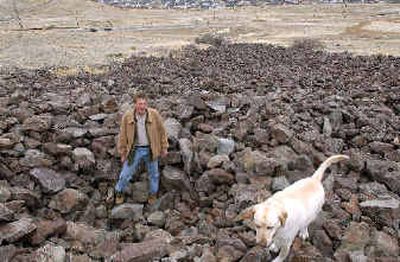Convictions in petroglyph thefts

RENO, Nev. – Two men who removed 1,000-year-old Indian rock carvings from a national forest and used some of the 300-pound boulders as lawn ornaments were convicted Wednesday of theft of government property.
They were acquitted of violating archaeological protection law.
John Ligon of Reno and Carrol Mizell of Van Nuys, Calif., insisted they did not know they were breaking the law, in part because no signs marked the site near Reno. They said they wanted to protect the etchings of a bighorn sheep and an archer from encroaching development.
Two of the three stolen rocks were found in Ligon’s front yard, where they had been placed as lawn ornaments.
“This should send a signal to others that we will vigorously pursue all our options, including criminal prosecution, if people continue to deface or destroy our archaeological sites,” Assistant U.S. Attorney Ron Rachow said.
David Houston, Mizell’s lawyer, said the split verdict shows the jury agreed the men were not “raiders of antiquities.”
To find the men guilty of theft of government property, the jury had to determine the property was worth more than $1,000. A Forest Service archaeologist testified the rocks’ archaeological value was at least $7,000, and a Washoe tribal leader said the etchings were “priceless.”
A guilty verdict on the charge of violating the Archaeological Resources Protection Act would have required proof that the men knew or should have known that the petroglyphs were valuable artifacts.
“The government lost the case they came to prosecute,” said Scott Freeman, Ligon’s lawyer.
The theft charge carries up to 10 years in prison, the archaeological violation up to two years.